STUDIO EDWARD CLYDESDALE THOMSON
BOUND TO THE MIRACULOUS
A CROSS-BORDER ZERO PLAYER GAME
Invitation card. Verso states 'Tuesday Evening, April 22nd, 8-10p.m', and underneath the Californian gallerie's details, states 'April 22 - May 17 1975'. The final date would have been when the artist had arrived in Holland by boat, an opening at the Groningen Museum, when a second invitation card was planned but never occured as the artist tragically was lost at sea.
At the heart of this project is an idea of mythic storytelling.
Dutch/Californian artist Bas Jan Ader was a conceptual and performance artist, and photographer. He was last seen in 1975 when he took off in what would have been the smallest sailboat ever to cross the Atlantic.
Ader embarked on what he called “a very long sailing trip.” The voyage was to be the middle part of a triptych called “In Search of the Miraculous,” a daring attempt to cross the Atlantic in a 12½ foot sailboat. He claimed it would take him 60 days to make the trip, or 90 if he chose not to use the sail. Six months after his departure, his boat was found, half-submerged off the coast of Ireland, but Bas Jan had vanished.*
Like with Bas Jan Ader’s original, this project aims to evoke the heroic and the tragic. The ever-changing beauty and danger of the open sea as a metaphor for our life-world. The tiny boat being a metaphor for our fragile existence floating perilously on this sea of circumstance.
Proto-type
Continuous live simulation of Guppy 13 crossing the Atlantic driven by real-time open-source weather, oceanographic and marine traffic data. Simulation runs inside unreal engine 5. Currently we are in preparation of the upcoming exhibition at the Groninger Museum and running a Kickstarter campaign for the development of the game app.
Using open source live weather data and marine simulation we create an online oceanic world in which the user is able to follow the artist’s journey perpetually, in real time.
Simulation Big Waves.
In this project the memory of Ader’s voyage serves as a frame story which will would allow us to explore questions about the climate, weather, pollution, data, history and endurance.
The difference between today and 40 years ago is that we are becoming increasingly aware that our actions have material effects on climate and weather patterns. With the growing frequency and intensity of Atlantic storms the Ocean Waves’ journey becomes increasingly certain to fail.
We believe it is relevant to retell this story today as its meaning and relevance has shifted away from an individual's existential struggle within the world, to a collective sense of precarity.
What dangers will this tiny boat encounter in this modern world? Will she make it to Groningen? Where will she disappear? With every failed attempt she will start back at the beginning of the trip, in search of favourable circumstances.
Diagram front view
As the virtual boat sails across the Atlantic, the ocean and weather effects will be changed using a custom-built system to replicate real-world weather.
The final system will draw data from Geographic Information Systems (GIS) to ensure that the weather and oceanographic data and lighting conditions for the virtual boat are the same as if the virtual boat were sailing in that real location.
We will create an AI (Artificial Intelligence) system to pilot the boat, reacting to the challenges of the weather, creating a degree of randomisation for every attempt to cross the ocean.
We will collect live data on for instance, speed, direction, wave hight, temperature, currents and precipitation. But we can also gather other kinds of data, like the plastic concentration on specific locations and the ships that are at sea at that specific moment. With this data we could know if and when our little boat would collide with a container ship.
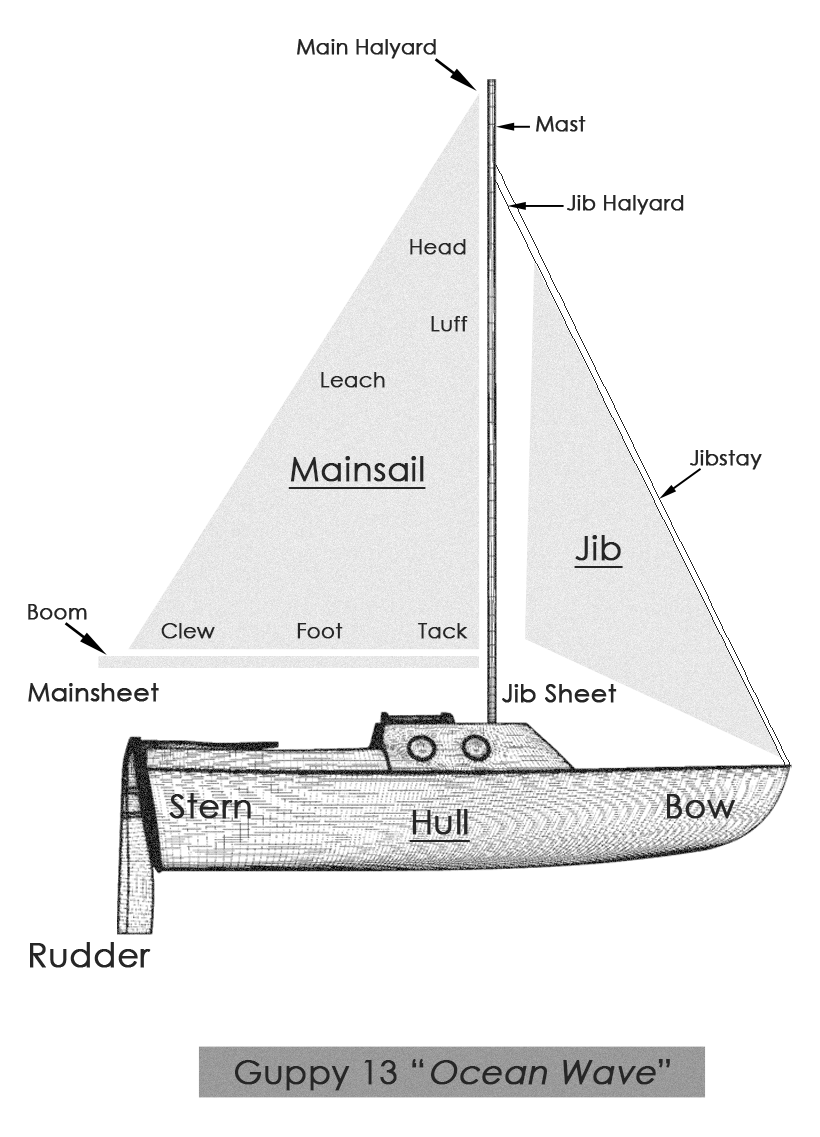
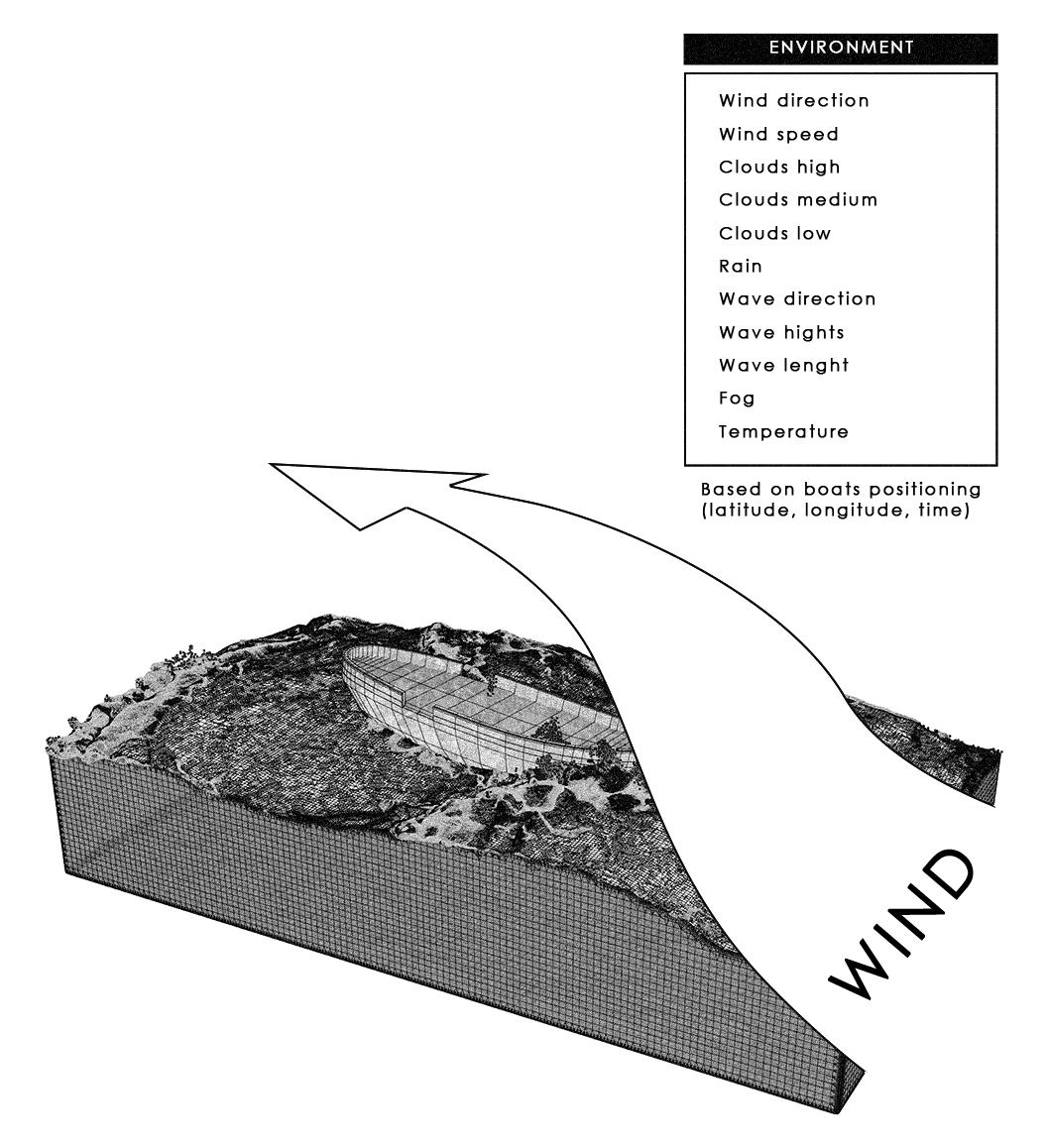
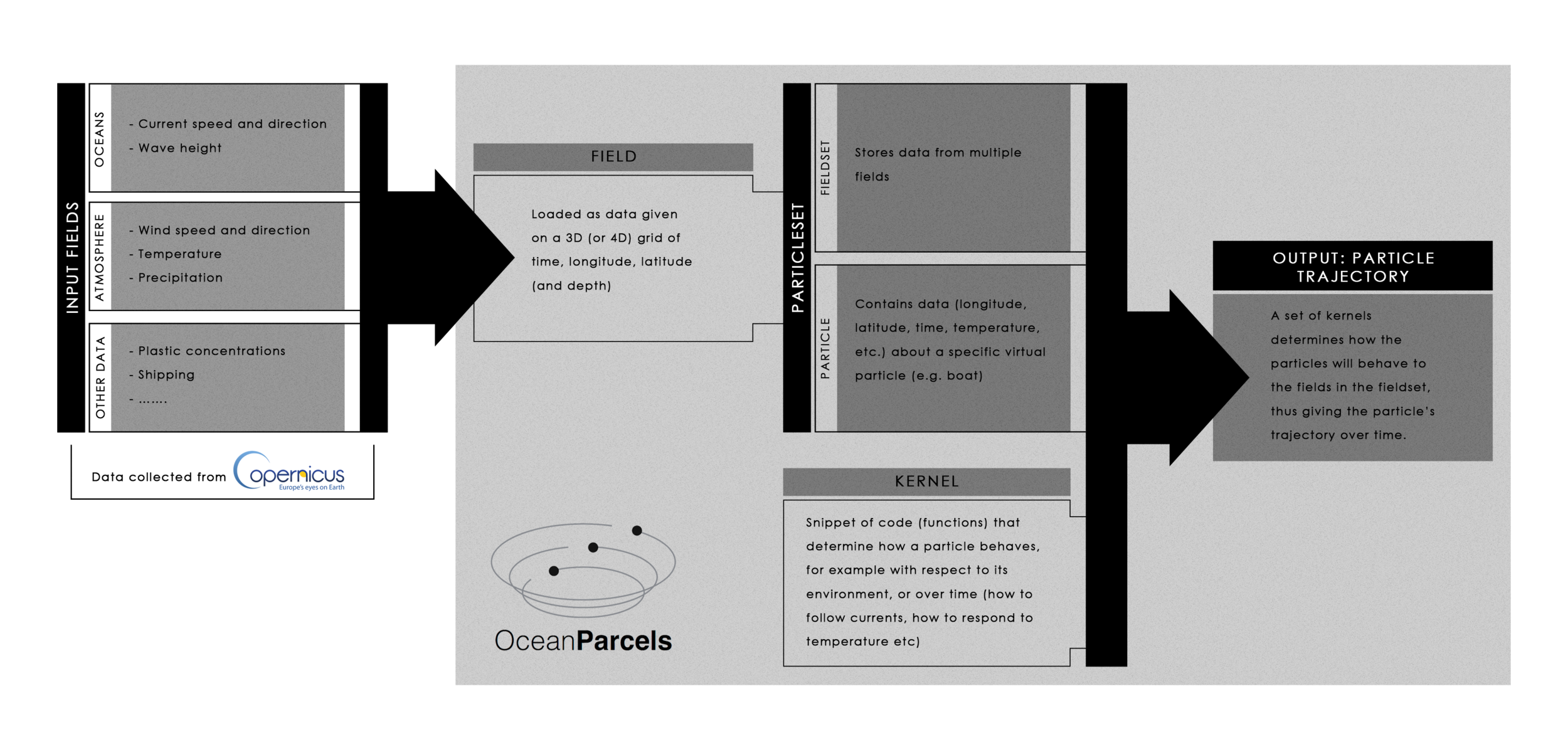
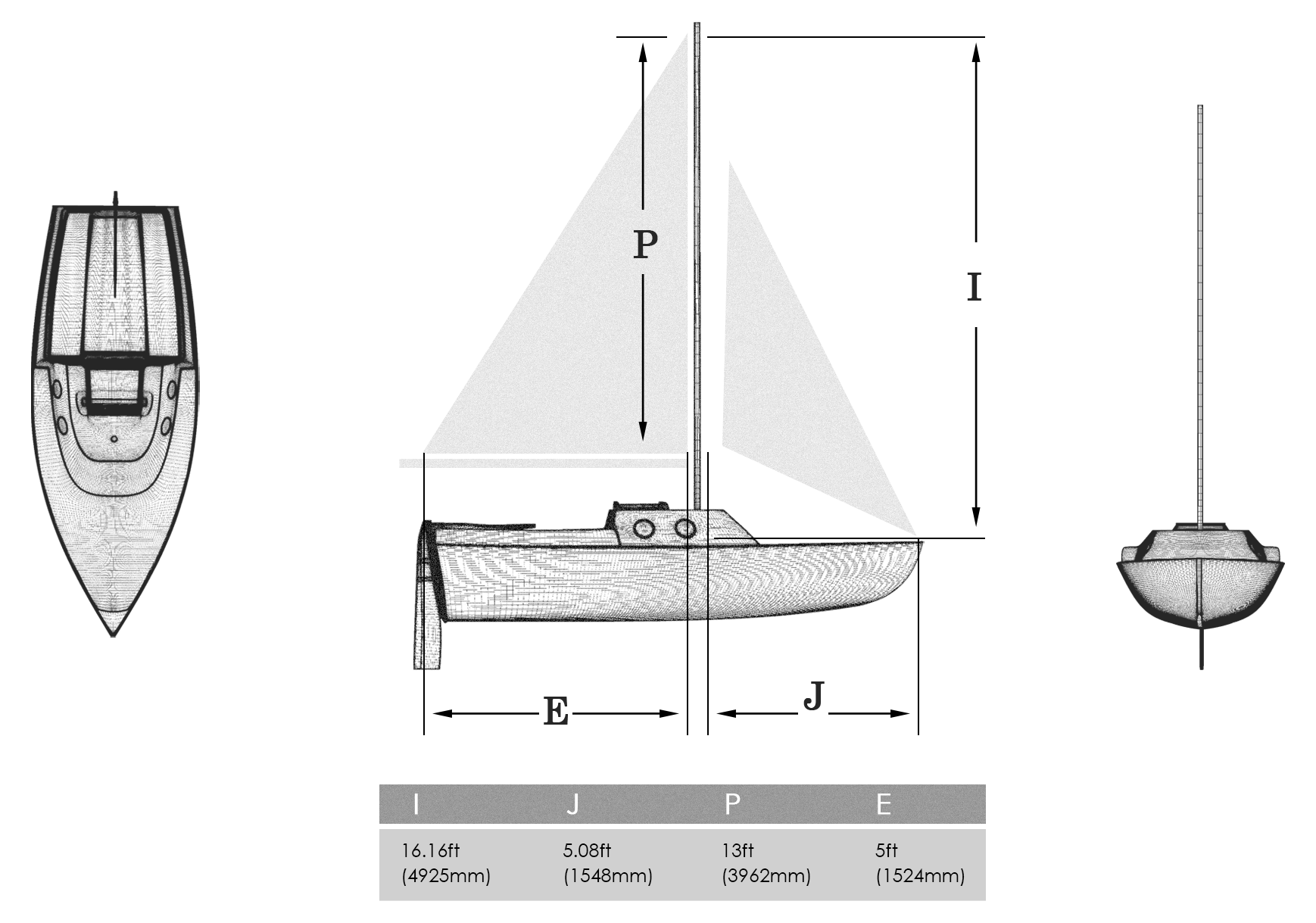
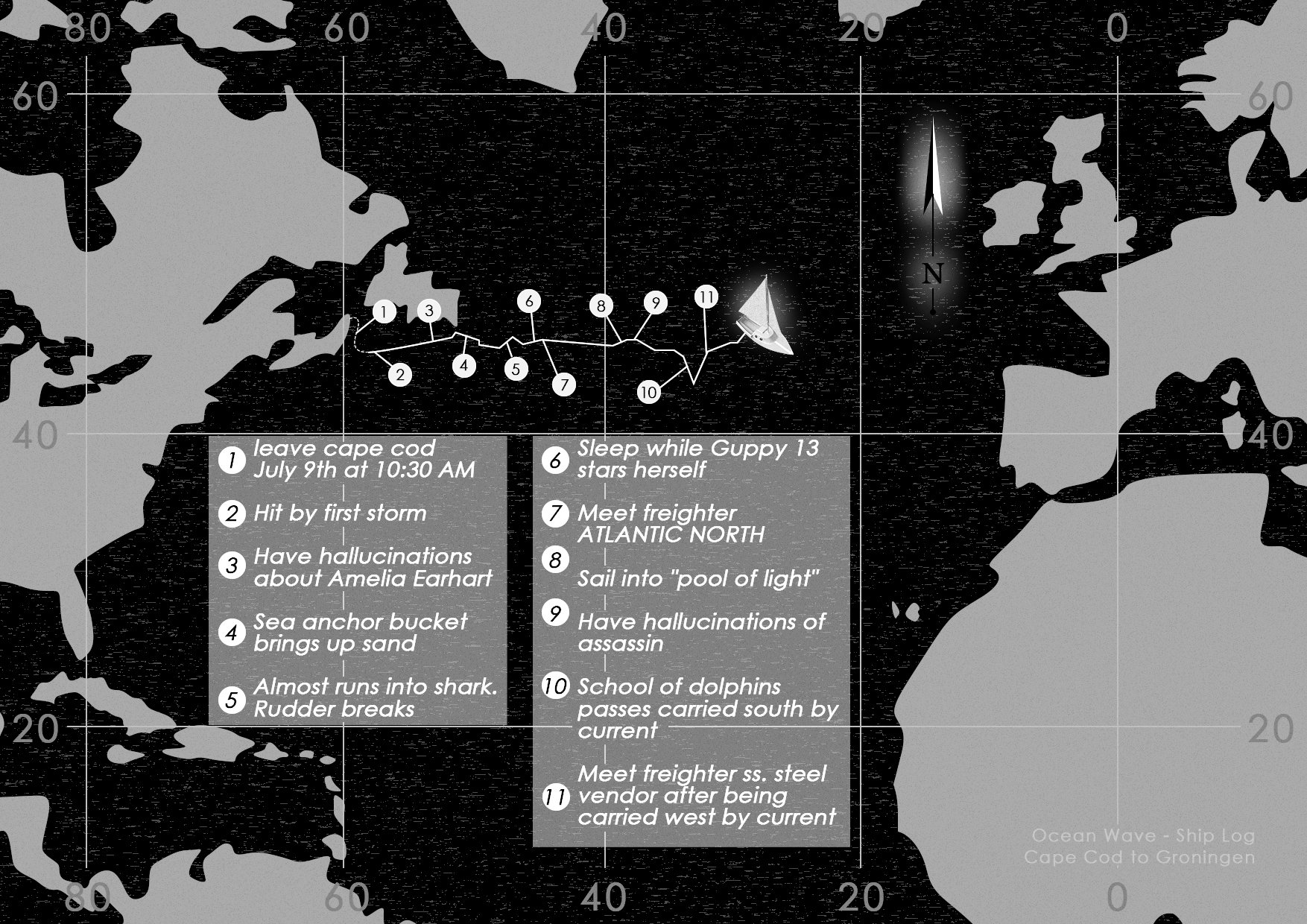

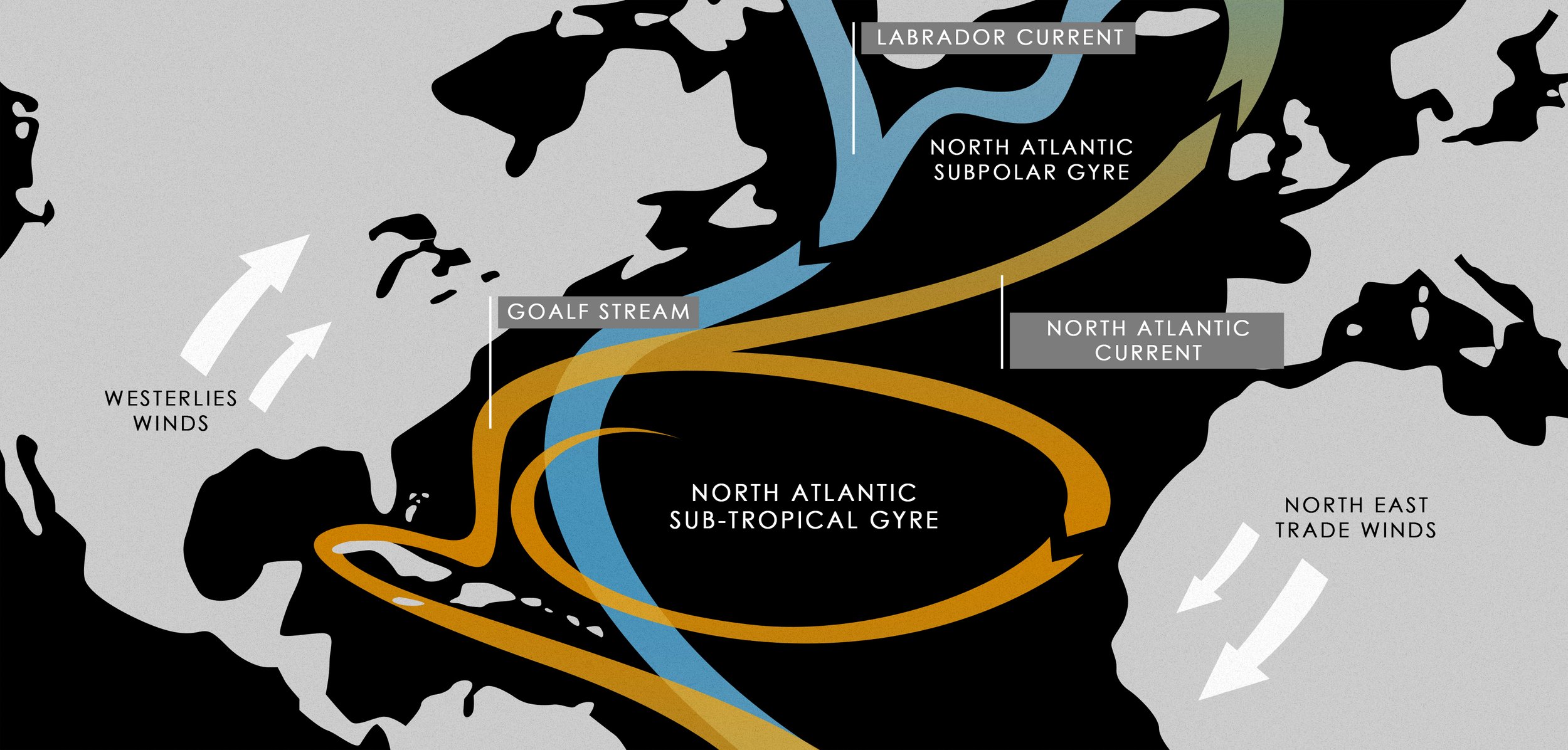
As the virtual boat sails the Atlantic, the ocean and weather effects will be changed using a custom-built system to replicate real world weather. By using Bas Jan Ader’s story, we create a human narrative. And by using the experimental power of gaming, the user can feel how climate, and by implication climate change, affects us all in a very personal way.
In our online journey, by using the power of art, everyone who lives today can be Bas Jan Ader and weather today’s storms, making the present environmental changes all the more tangible.
Pushing the boundaries of art, technology and social awareness.
Collaboration and sharing the knowledge
BUas, Breda University Of Applied Sciences
BUas has been working on the Marine Spatial Planning (MSP) project for five years, and has achieved a level of fidelity and complexity in the simulation that has been useful to planners and governmental bodies across Europe and the world. The project is also aimed at a very narrow professional audience.
One of the motivating factors for involvement is a broader interest in representation of the environmental crisis. By tying aspects of the simulation to the art world, BUas hopes to connect the relevance of the MSP planning tool to wider social discourses on representation of human connection to, and impact on, the environment. In essence, it will allow their research to reach a wider, non-specialist audience.
Utrecht University
This project allows the Oceanology department of Utrecht University to use their software ‘OceanParcels’ in a real-time setting. Usually this software is used to analyse movement of particles such as plastics and nutrients, to determine their origin and fate.
The project idea to simulate Bas Jan Ader’s journey using live data will be an interesting test case as they are planning to use their software for live simulations of plastic pollution in the future.
Bas Jan Ader’s boat will feature more complicated behaviour than the particles they usually simulate, which mostly follow the ocean currents. This allows the researchers to test their software with a more complex scenario. Finally, this project will help them regarding effective visualisation of our projects.
Studio Edward Clydesdale Thomson
Within the professional field the project's greatest relevance will be in bringing different disciplines together. It combines people and expertise from art history, visual art, programming, modelling, animation, climate science and disaster early warning systems. Bringing together these different fields of knowledge will lead to new understandings, connections and collaborations.
With bound to the miraculous we update a historical narrative: bringing the romantic story of Bas Jan Ader to the 21st century. In doing so we will bring a different audience in connection with conceptual art (history) and Ader’s work.
In a more practical way this project will bring more skills and methodologies to our studio and because of Thomson’s work as head of the fine art department of ArtEZ University in Arnhem, it will be passed on to new generations of artists.
Supported by Pauwhof Fonds









